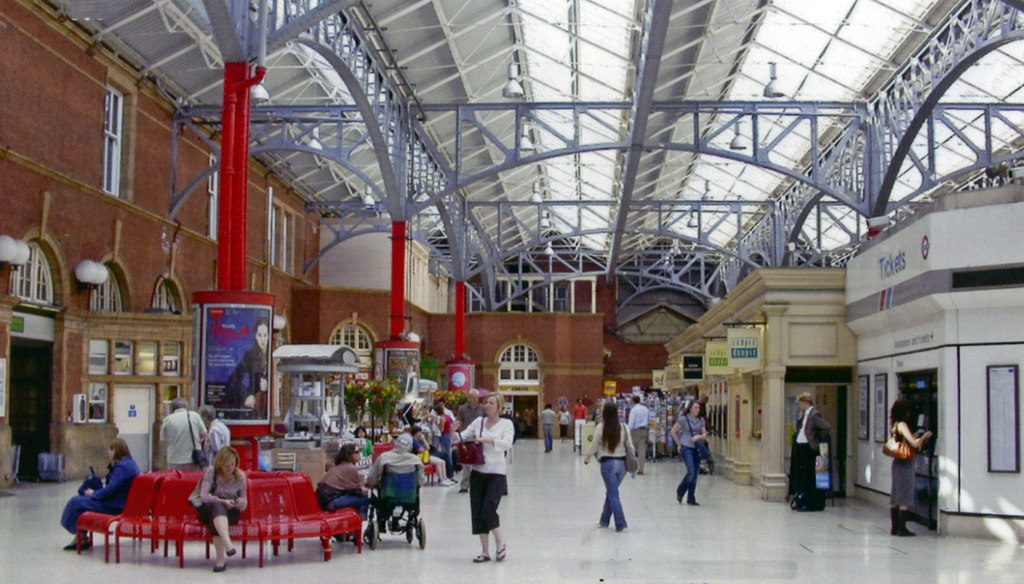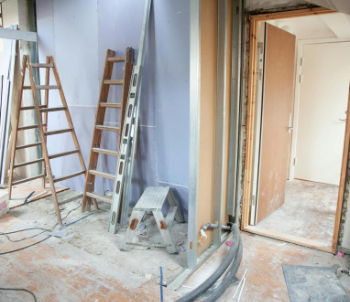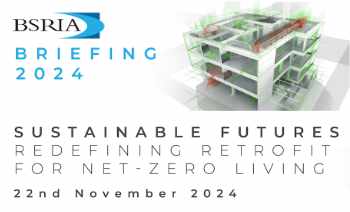Design build finance transfer (DBFT)
Marylebone station, concourse 2006.
Contents |
[edit] Introduction
Design, build, finance, transfer (DBFT) is a project delivery method that allows one contractor with expertise in design, construction and financing to be appointed to design, construct and arrange financial resources for the works. This is similar to design build finance and operate (DBFO), except that the contractor eventually transfers ownership of the project back to the client. Variations include: design build operate (DBO), and build, own, operate, transfer (BOOT).
Design, build, finance, transfer can be attractive to some clients, as it designates a single point of responsibility for delivering the project. However, some clients consider it is only appropriate for more simple projects where design quality is not the main consideration.
[edit] PPP and PFI
DBFT is often used for large projects (such as those involving infrastructure), which are developed through Public Private Partnerships (PPPs). Public Private Partnership refers to a very broad range of partnerships in which the public and private sectors collaborate for some mutual benefit. PPPs can cover a range of partnerships to deliver services, buildings or infrastructure for central or local government. For more information see: Public Private Partnership.
Private Finance Initiative (PFI) is a commonly used form of PPP. PFI is one of the three procurement routes favoured by the Government Construction Strategy for central civil government projects. The risk associated with PFI projects is transferred to the building contractors, and operating companies may charge high prices in return. This type of financing is both attractive and controversial, since PFI projects do not appear on the balance sheet of public entities. For more information see: Private Finance Initiative.
[edit] How DBFT works
Under a DBFT arrangement, a contractor (the private organisation in a Public Private Partnership) undertakes to complete a project which they are granted a concession to design, build and finance by a public sector partner, typically a government department. The public partner may provide limited funding or other benefits (such as tax exemptions), but the private organisation accepts most of the risks.
The contractor may use their own in-house designers to design the building, or they can appoint consultant designers. The client's designers can also be employed by the contractor to help complete a design which they have begun (as with a consultant switch or novation on a design and build project).
Essential to the design phase is the employer’s requirements (ER). This document, which is prepared by the client, provides a description of how the project should proceed. Employer’s requirements often include the following:
- The specification for the building.
- The scope of services required from the contractor.
- An allocation of risk for unknown items.
The level of detail in the employer's requirements and the extent of design required from the contractor is very variable. Employer's requirements can range from a somewhat simple specification to a fully developed performance specification and concept design.
For more information see: Employer's requirements
Contractor's proposals (CP) are then prepared in response to the employer's requirements. The phrase 'contractor's proposals' (CP) generally refers to documentation prepared by tenderers where the tenderer is to design parts of the works.These present the contractor's suggested approach for designing and constructing the building, along with the comprehensive price for the works.
For more information see: Contractor's proposals.
As DBFT can result in a long-term relationship between the client and contractor, since it is typically entered into before any significant design work is undertaken and can last until completion of construction, which can be many years on a large infrastructure project. Consequently, it is extremely important that the client defines their requirements very carefully, in particular the quality that is required and how it will be judged. A great deal of risk is given to the contractor, and the price they offer will reflect this.
Once the project is complete, the private organisation can then transfer the control of the project to the public sector partner, either freely or for a fee that is stipulated in the original contract.
[edit] Applications
One example of this procurement method is the rail upgrade project undertaken on behalf of Chiltern Railways. Known as Evergreen 2, this project added two platforms to the old carriage sidings at Marylebone Station, London. It was delivered under a DBFT arrangement between Carillion Construction Ltd (as the overseeing contractor) and Sumitomo Mitsui Banking Corp Europe Ltd (as the provider of financing).
Once completed, the assets were purchased by Network Rail and then added to their Regulatory Asset Base. The project was completed in two years and was the first of its kind in the rail industry.
[edit] Related articles on Designing Buildings Wiki
- Build lease transfer BLT.
- Build operate transfer BOT.
- Build, own, operate and transfer (BOOT).
- Carillion.
- Contractor's proposals.
- Design and build.
- Design build finance and operate.
- Design, build, finance, maintain DBFM.
- Design build operate (DBO).
- Design build operate maintain DBOM.
- Design Build Operate Transfer DBOT.
- Employer's requirements.
- PFI vs PPP.
- Private Finance Initiative.
- Procurement route.
- Public Private Partnership.
- Public procurement.
- Risk allocation.
[edit] External resources:
- Evergreen II to boost Chiltern, by CMAJ, Railway Gazette, 1 February 2005.
- Evergreen 2 wins Project of the Year Award at National Rail Awards, John Laing, 11 Sept 2007.
- Private Finance Projects and off-balance sheet debt, published by the House of Lords, session 2009-2010 (downloadable PDF).
Featured articles and news
Considerate Constructors Scheme acquires Building A Safer Future
Acquisition defines a new era for safety in construction.
AT Awards evening 2024; the winners and finalists
Recognising professionals with outstanding achievements.
Reactions to the Autumn Budget announcement
And key elements of the quoted budget to rebuild Britain.
Chancellor of the Exchequer delivers Budget
Repairing, fixing, rebuilding, protecting and strengthening.
Expectation management in building design
Interest, management, occupant satisfaction and the performance gap.
Connecting conservation research and practice with IHBC
State of the art heritage research & practice and guidance.
Innovative Silica Safety Toolkit
Receives funding boost in memory of construction visionary.
Gentle density and the current context of planning changes
How should designers deliver it now as it appears in NPPF.
Sustainable Futures. Redefining Retrofit for Net Zero Living
More speakers confirmed for BSRIA Briefing 2024.
Making the most of urban land: Brownfield Passports
Policy paper in brief with industry responses welcomed.
The boundaries and networks of the Magonsæte.
London Build Fire and Security Expo
20-21 Nov and now with new Ambassador Programme..
The Scottish Building Safety Levy
Eight weeks of consultation closing on 18 November.
The grey, the brown and the golden rules of housing
shifting policies from the wild west of housing development.
Future proofing homes that are fit for purpose
Specification challenges and the role of plastic.
Thousands of new homes unlocked for brownfield sites
£68 million to 54 councils for neglected land into new homes.

























Comments